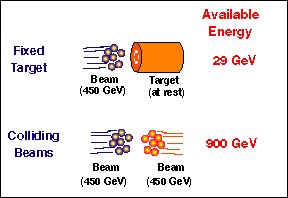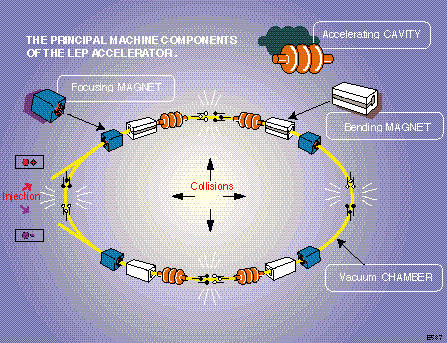

| Einstein's famous equation E=mc2 tells us that energy and mass are equivalent. Thus the energy of a particle beam can convert into mass, creating a fascinating wealth of additional particles, many of them highly unstable and not normally found in nature. However if the incoming beam is simply slammed into a stationary target, much of the projectile energy is taken up by the target's recoil and not exploitable. Much more energy is available for the production of new particles if two beams travelling in opposite directions are collided together. All the world's major particle physics projects now under way concentrate on such colliding beam machines. |
